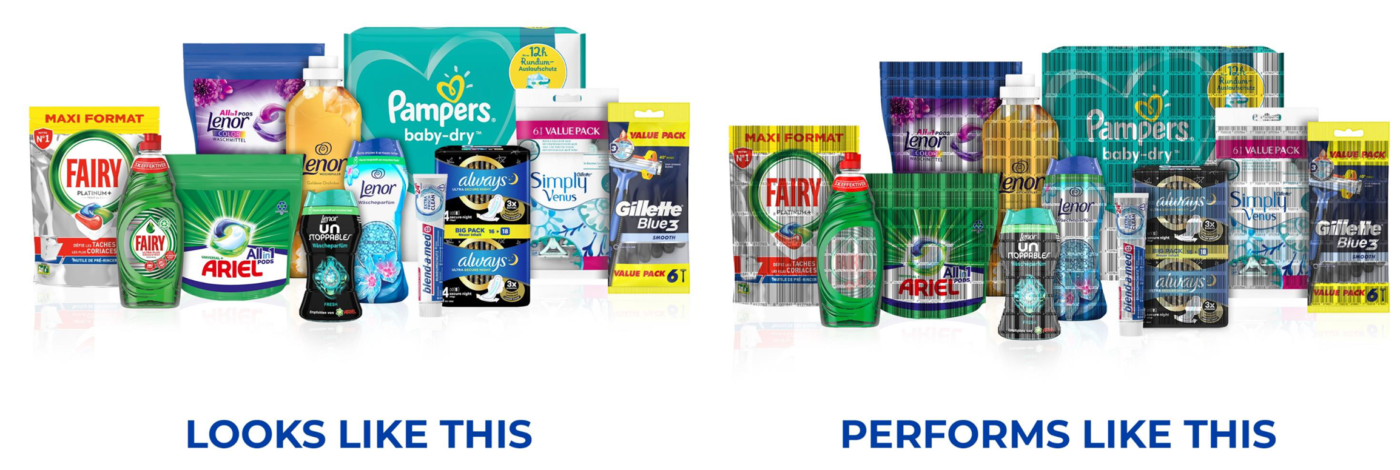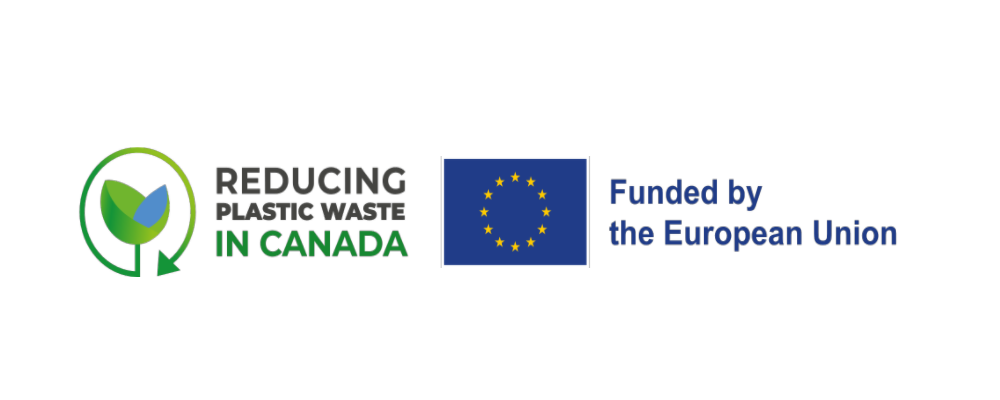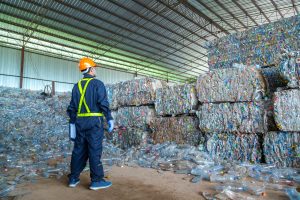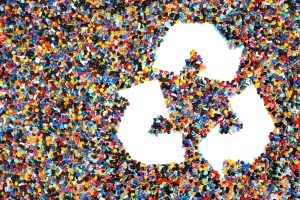Story 2: Digital Watermark Labelling – Upstream Producer Responsibility Technology Development by an Industry Consortium
Digital watermark labelling is a transformative innovation that includes invisible digital codes on a package to assist in sorting flexible plastics. This technology was developed through a consortium of producers from the packaging value chain who joined forces to develop technology with the ambitious goal to enable better sorting and higher-quality recycling rates for packaging across the EU, driving a truly circular economy.
The first pilot scale development of digital watermarks as an effective option for sorting technology began in 2020 with the New Plastics Economy initiative led by the Ellen MacArthur Foundation. The New Plastics Economy initiative was a global, multi-industry initiative that aimed to accelerate business-driven innovations to help scale the circular economy for plastics. Proctor & Gamble, along with the Ellen MacArthur Foundation, established the HolyGrail project – a collaborative effort designed to solve one of the largest obstacles facing plastic recycling, which was inefficient sorting at recycling facilities.
Digital watermarks can now be embedded on packaging in two main ways. The first is by manipulating the artwork on the packaging to include imperceptible codes; and the second is through the blow molding process with codes embossed on the container surface. In both cases the digital watermark codes are barely detectable by the human eye and can include multiple types of data. The technology uses a high-speed camera module on the Near Infrared (NIR) optical sorting units to detect the digital watermark on the packaging, relate the code to the attributes in a database, and can be programmed to eject a targeted package to a specific stream, to enable enhanced sorting of flexible plastics.
Holy Grail 2.0 has continued investment with multiple industry players and associations to further develop and test this technology in 2022. The project plans to deploy prototypes in a large-scale pilot test in a commercial sorting and/or recycling facility under standard operating conditions in the city of Copenhagen. Current work aims to prove technical viability of the concept on a wider scale, and to prove the economic viability of the concept in a variety of business models. The continued research will also aim to examine new options for consumer engagement such as exploring possibilities of integrating this technology to facilitate digital product passports integrated with smart phone applications. HolyGrail 2.0 is driven by the European Brands Association (AIM) and funded by the Alliance to End Plastic Waste.

Source:
Reducing Plastic Waste in Canada Webinar #2: Advances in Sorting Collection Technologies, presentations, slide 41
URLs
endplasticwaste.org/en/our-work/plastic-waste-free-communities/holy-grail
#CircularEconomy #Recycling #PlasticRecycling




